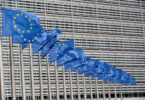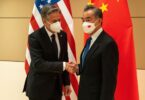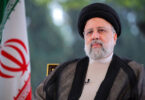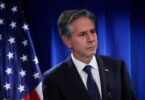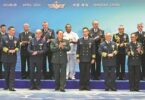Prime Minister’s Advisor on commerce and textiles Abdual Razzaq Dawood told Senate that a five years strategic trade policy framework has been prepared to bolster exports in the areas of Information Technology and Engineering products. If a draft of such a policy is under consideration then it needs to be shared with trade bodies and print media for getting valuable input before it is submitted to the Economic Coordination Committee of the Cabinet.
It merits mention here that draft policy frame work of textile products was shred with print media for informed debate and analysis by the experts. But this sort of input helps in realising the intended objectives only when there is seriousness on the part of decision makers to translate it into a comprehensive long term policy. In the past one and half year, mere public relation exercise has been done by setting deadlines for delivering policies whereas it was industrial policy or trade policy. The less said the better about agriculture policy.
Trade policy is prepared for one or two items of exports. It covers wide range of those value added goods and primary commodities in which a country enjoys comparative advantage in terms of quality, reliability, price and innovative features. In the light of past precedents of exports facilitation policies, there seems no rationale for drafting single item specific trade policy frameworks such as under consideration drafts one draft for textiles and the other for Information Technology and Engineering products.
Based on merely assumptions and unrealistic objectives remote from ground realities, a two phase strategic textile policy framework has been conceived for2020- 2025 and 2026-30. In the first phase textile exports shall be enhanced from the current level of $ 3.97 billion to $25 billion by 2025 and in the second phase textile exports shall be increased to S 50 billion, completely ignoring the technological, quality, price, reliability and innovative edge that give comparative advantage to the identical products from India, Bangladesh, Thailand and Vietnam.
The policy envisages greater amount of utilization of locally produced cotton, yarn and manmade fiber and filament to boost value added exports. Again the competitive edge of our South Asian competitors’ has not been taken into accounts. Beautiful words are no substitutes for concrete actions.
Few salient features of strategic textile policy framework include restoration of profitability of cotton growers to enhance yield of the crop; strengthening manmade fiber sector; regional competitive energy prices; and prompt payment of sales tax refund. Of these the incentives of strengthening manmade fiber sector and prompt payment of sales tax refund can materialise. Cotton growers have decreased areas under cultivation of this crop by growing sugarcane on greater parts of their cultivable lands because of not getting support price for cotton.
National Assembly Standing Subcommittee on Agriculture, headed by Syed Fakhar Imam, in consultation with APIMA and cotton growers recommended substantial increase in support price of cotton but decision in this regard is still awaited. The target of getting 15 million bales of cotton production could not be achieved as 25 percent standing crop was destroyed by heat wave last year.
No concrete measure for providing that type of cotton seed is insight which germinates such cotton plantation that can survive climate change impact. Given the clout and representation of IPPs owners in the corridors of power and pilferage and distribution losses in gas sector and shady LNG import deal, lowering of prices of energy input prices to regionally competitive level is nothing but daydreaming.
The temporary phase of modest growth in exports is over now. Merchandise export has registered negative growth in the months of December and January. The data released by Pakistan Bureau of Statistics depicts 3.8 percent fall in exports. The main focus of the Advisor for commerce is on negotiating new trade agreements with existing and new trading partners for preferential market access, which is appreciable for increasing the quantum of exports. But these efforts bear fruits only when domestic production lines are operational to the full capacity and plans for their expansion and modernisation are in place.
Sharp decline in the production of large and medium scale manufacturing tell a different story. Notwithstanding the feelers released to print media and flowery wordered statements of minsters and advisors, the much awaited industrial and trade policies have missed several deadlines. The mainstay of the economy is still agriculture. Trade policy needs to be supported by comprehensive industrial and agriculture policies which don not seem to figure in the priorities’ list of the government.

